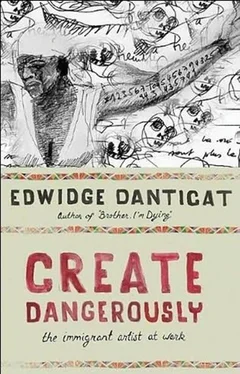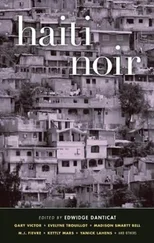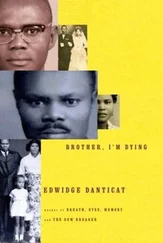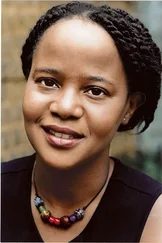I too needed to laugh, so I began reading my friend Dany Laferrière again. Dany is one of the funniest people I know and his sense of humor often infuses his work. Dany was, along with Lyonel and Évelyne Trouillot, one of the writer organizers of a literary festival called Étonnants Voyageurs, which was to have started in Port-au-Prince on January 14, 2010. Some health concerns regarding my one-year-old daughter had forced me to turn down the invitation to participate in the festival. Given that I often travel to Haiti with my family and that we often try to add a few days at the beginning or the end of trips like these, it is possible that if we had agreed to attend Étonnants Voyageurs, we, along with forty other writers who live outside of Haiti, might have been either additional victims or survivors of the earthquake.
Dany Laferrière was an additional survivor of the earthquake. A few days later, he returned to Canada, where he lives, to tell of what he had seen: of the bravery and dignity of Haitians who initially received no outside help and dug their friends and families out of the rubble with their bare hands while sharing what little food and water they had.
Dany was criticized by some Canadian journalists for leaving Haiti after the earthquake. He should have stayed with his people, they said. And I have no doubt that if he were a doctor, he would have. But at that time, his role was to bear witness and he did it beautifully, going on the radio and television and writing his essays of fifteen hundred words or less to add one more voice to our chorus of bereavement and paralyzing loss, a loss that is echoed in his 2009 novel L’Énigme du Retour (The Enigma of Return).
Published in Paris and Canada a year before the earthquake, the novel follows a Haitian Canadian writer who returns to Haiti after the death of his father. L’Énigme du Retour was the first novel I read after the earthquake. I devoured it in a few hours. Unlike many of Dany’s other books, it wasn’t funny. I didn’t laugh. I cried. The novel, it turns out, is a love poem, a love song to a Haiti that no longer exists, the Haiti of before the earthquake, which I am already starting to idealize, the Haiti where-even during its most difficult times-homes, churches, schools, bookstores, libraries, art galleries, museums, movie theaters, and government buildings were still standing.
“What is certain,” writes the novelist narrator, “is that I wouldn’t have written like this if I had stayed there / Maybe I would not have written at all / Living outside of our countries, do we write to console ourselves?”
Suddenly, this stunning chronicle of a homecoming to a very recent Haiti feels like a historical novel. Then it hits me. From now on, there will always be the Haiti of before the earthquake and the Haiti of after the earthquake. And after the earthquake, the way we read and the way we write, both inside and outside of Haiti, will never be the same.
Daring again to speak for the collective, I will venture to say that perhaps we will write with the same fervor and intensity (or even more) as before. Perhaps we will write with the same sense of fearlessness or hope. Perhaps we will continue to create as dangerously as possible, but our muse has been irreparably altered. Our people, both inside and outside of Haiti, have changed. In ways that I am not yet fully capable of describing, we artists too have changed.
Twenty-three days after the earthquake, my first trip to Haiti is brief, too brief. A friend finds a last-minute cancellation on a relief plane. Another agrees to help my husband look after our young girls in Miami.
I arrive in Port-au-Prince at an airport with cracked walls and broken windows. The fields around the runway are packed with American military helicopters and planes. Past a card table manned by three Haitian immigration officers, a group of young American soldiers idle, cradling what seem like machine guns. Through an arrangement between the Haitian and the U.S. governments, the American military, as leader in the relief effort, has taken over Toussaint L’Ouverture Airport.
Outside the airport, my friend Jhon Charles, a painter, and my husband’s uncle, whom we call Tonton Jean, are waiting for me. A small man, Tonton Jean still cuts a striking figure with the dark motorcycle helmet he wears everywhere now to protect himself from falling debris. Jhon and Tonton Jean are standing behind a barricade near where the Americans have set up a Customs and Border Protection operation at the airport.
Whose borders are they protecting? I wonder. I soon get my answer. People with Haitian passports are not being allowed to enter the airport.
Maxo’s oldest son, Nick, who now lives in Canada, is also in Haiti. He arrived a few days before I did to pay his respects and see what he could do for his brothers and sisters, who had been pulled, some of them wounded, from the rubble of the family house in Bel Air. When I arrive in Port-au-Prince, Nick is at the General Hospital with two of his siblings, getting them follow-up care.
One of the boys, thirteen-year-old Maxime, has already lost a toe to gangrene. Nick was told that his eight-year-old sister, Monica, might need to have her foot amputated, but the American doctors who are taking care of her in a tent clinic in the yard of Port-au-Prince’s main hospital think they may be able to save her foot. This makes Monica luckier than a lot of other people I see hobbling on crutches all over Port-au Prince, their newly amputated limbs covered by shirt or blouse sleeves or pant legs carefully folded and pinned with large safety pins.
I am heading to the hospital to see Nick and the children when I get my first view of the areas surrounding my old neighborhood. Every other structure, it seems, is completely or partially destroyed. The school I attended as a girl is no more. The national cathedral, where my entire school was brought to attend mass every Friday, has collapsed. The house of the young teacher who tutored me when I fell behind in school has caved in, with most of her family members inside. The Lycée Petion, where generations of Haitian men had been educated, is gone. The Centre d’Art, which had nurtured thousands of Haitian artists, is barely standing. The Sainte-Trinité Church, where a group of famous Haitian artists had painted a stunning series of murals depicting the life of Christ, has crumbled, leaving only a section of a lacerated wall, where a wounded Christ seems to be ascending toward an open sky. Grand Rue, downtown Port-au-Prince’s main thoroughfare, looks as though it had been bombed for several consecutive days. Standing in the middle of it reminds me of film I had seen of a destroyed Hiroshima. With its gorgeous white domes either tipped over or caved in, the national palace is the biggest symbol of the Haitian government’s monumental loss of human and structural capital. Around the national palace has sprung up a massive tent city, filled with a patchwork of makeshift tents, actual tents, and semipermanent-looking corrugated tin structures, identical to those in dozens of other refugee camps all over the capital. The statues and monuments of the unknown maroon, a symbol of Haiti’s freedom from slavery, of Toussaint L’Ouverture, Henri Christophe, Jean-Jacques Dessalines, and even a more recent massive globelike sculpture commissioned by President Jean-Bertrand Aristide to commemorate Haiti’s bicentennial in 2004-these monuments and symbols around the national palace are still standing; however, their platforms now serve as perches from which people bathe and children play.
Outside the nursing and midwifery schools near the General Hospital are piles of human remains freshly pulled from the rubble. Dense rings of flies surround them. The remains are stuck together in two large balls. I wonder out loud whether all these nursing and midwifery students had been embracing one other when the ceiling collapsed on top of them, their arms and legs crisscrossed and intertwined. My friend Jhon Charles corrects me.
Читать дальше












